Sorry, Dear Abby—Ann Landers Advises a Better Cake
Success is all well and good, but which famous advice columnist had a better cake recipe?
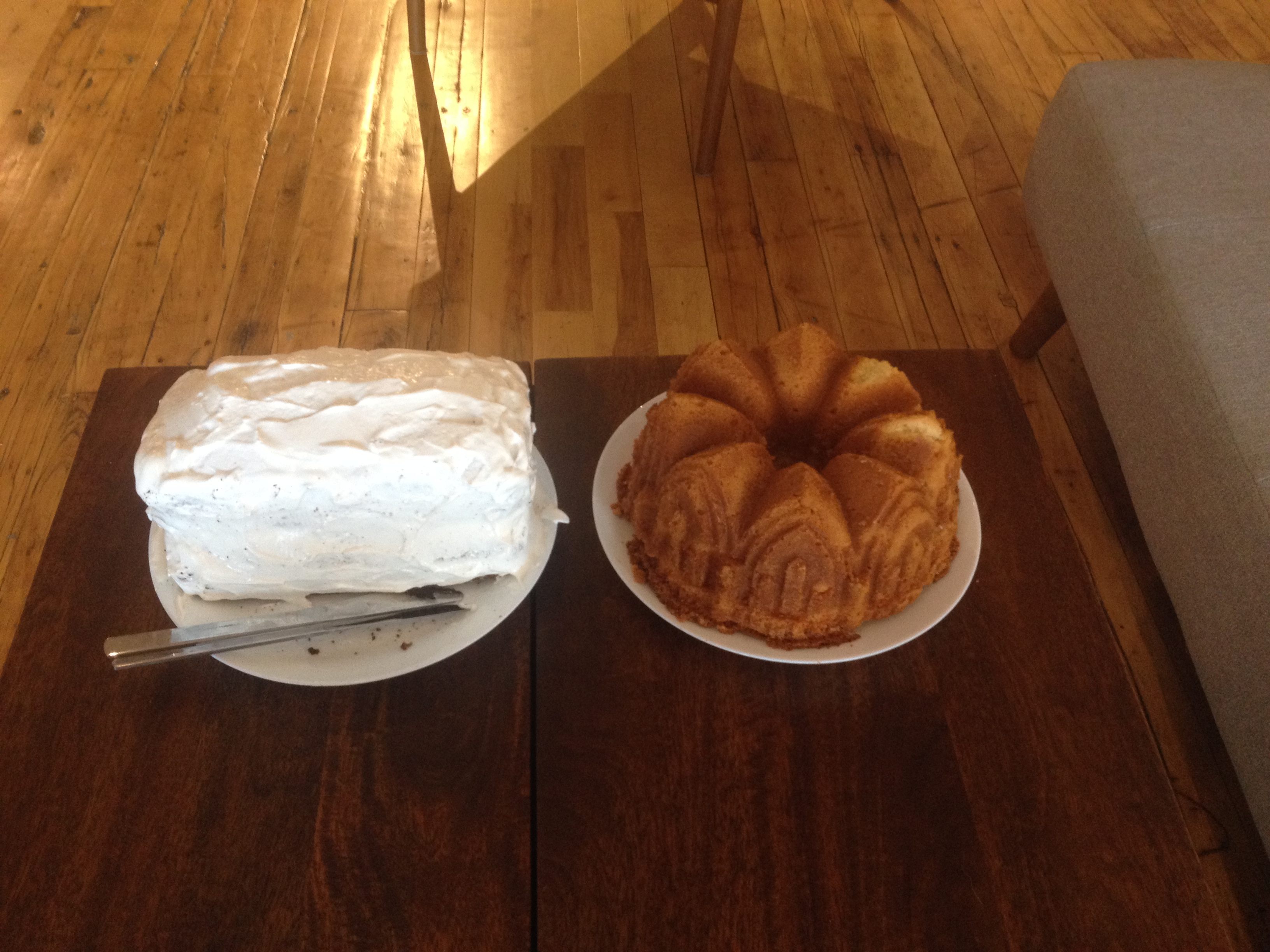
The Dear Abby Cake and the Ann Landers Cake, side by side. (Photo: Atlas Obscura)

From the time the twins were born, in 1918 in Sioux City, Iowa, they were fated to lead entwined lives.
The woman who would become Ann Landers was born first, and her parents named her Esther Pauline Friedman. Minutes later came future-Abby, and her parents named her (seriously) Pauline Esther Friedman. Eppie and Popo, as they soon nicknamed themselves, dressed identically and entertained guests by singing Andrews Sisters’ duets in Yiddish. Throughout their lives, they continued to share activities while done up in matching costumes—they co-wrote a college gossip column, married in the same ceremony with the same hairstyle, veil, and dress, and settled down with their families in Eau Clair, Wisconsin, where they tended to co-lead the town parade in a Cadillac.

They grew up to be America’s foremost advice givers—Esther took the name “Ann Landers”, with her widely-syndicated, highly-regarded advice column beginning in 1955. Abby became ”Dear Abby,” with her column launching in 1956.
But while they spent their lives solving America’s most intimate problems, these two sisters never overcame a professional and personal rivalry that spanned decades. A pugnacious 1958 LIFE Magazine dual profile has them swinging at each other every chance they get, painting Ann as a jealous crank and Abby her blithe tormenter. Ann accuses Abby of gold-plating her silver jewelry. Abby keeps a book called The Hostile Mind around, not to better understand her angry interlocutors, but for “clues” about her sister. “I understand why she’s disturbed,” she says in the piece. “She wanted to be first violin in the school orchestra, but I was. She swore she’d marry a millionaire, but I did. I’m not trying to be the champion.” Ann replies: “That’s her fantasy. She’s just like a kid who beats a dog until somebody looks, then starts petting it.”
So for Rival’s Week, we wanted to explore another facet of their lifelong competition—a bake-off.
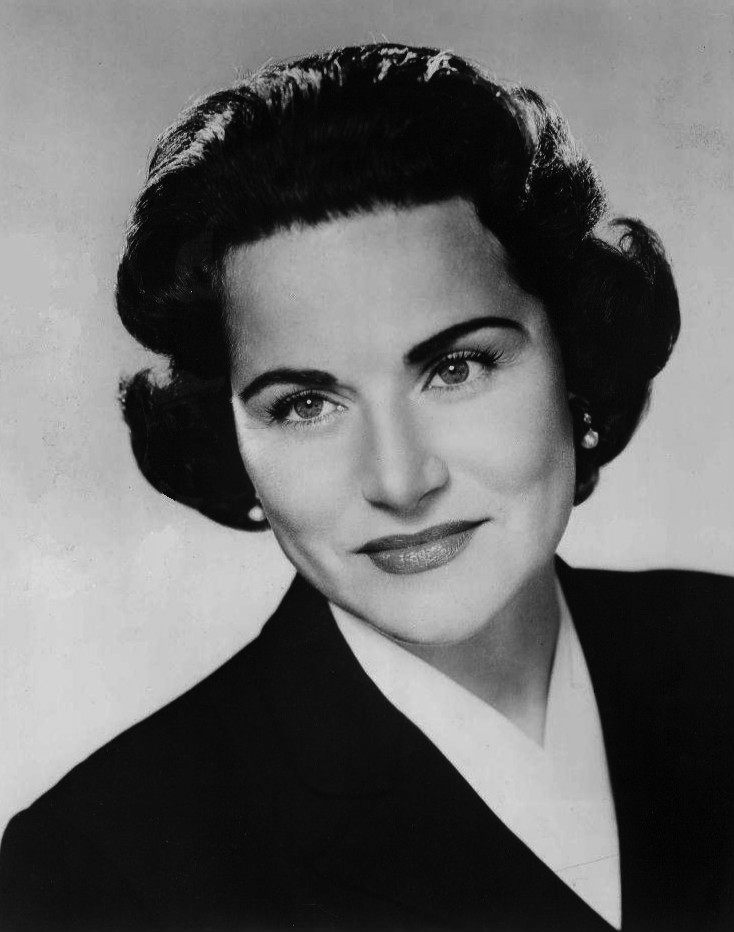
Pauline “Dear Abby” Phillips, also in 1961. (Photo: Easter Seals/Public Domain)
The story of their epic dispute begins in the 1930s, when Eppie moved to Chicago and successfully applied to be the Sun-Times’s new widely-syndicated advice-giver. Although “Ask Ann Landers” had existed before her, begun by Ruth Crowley in 1943, she quickly made it her own.
Early on in her tenure, she asked her sister for some help getting through the onslaught, and Popo liked the work so much she decided to get her own gig, advising the readers of the San Francisco Chronicle and beyond. She picked her own stately name—Abigail Van Buren, half Old Testament, half old president—and “Dear Abby” was born, suddenly competing with “Ask Ann Landers” for attention. Once again, the sisters were doing the same thing, dressed identically in newsprint.
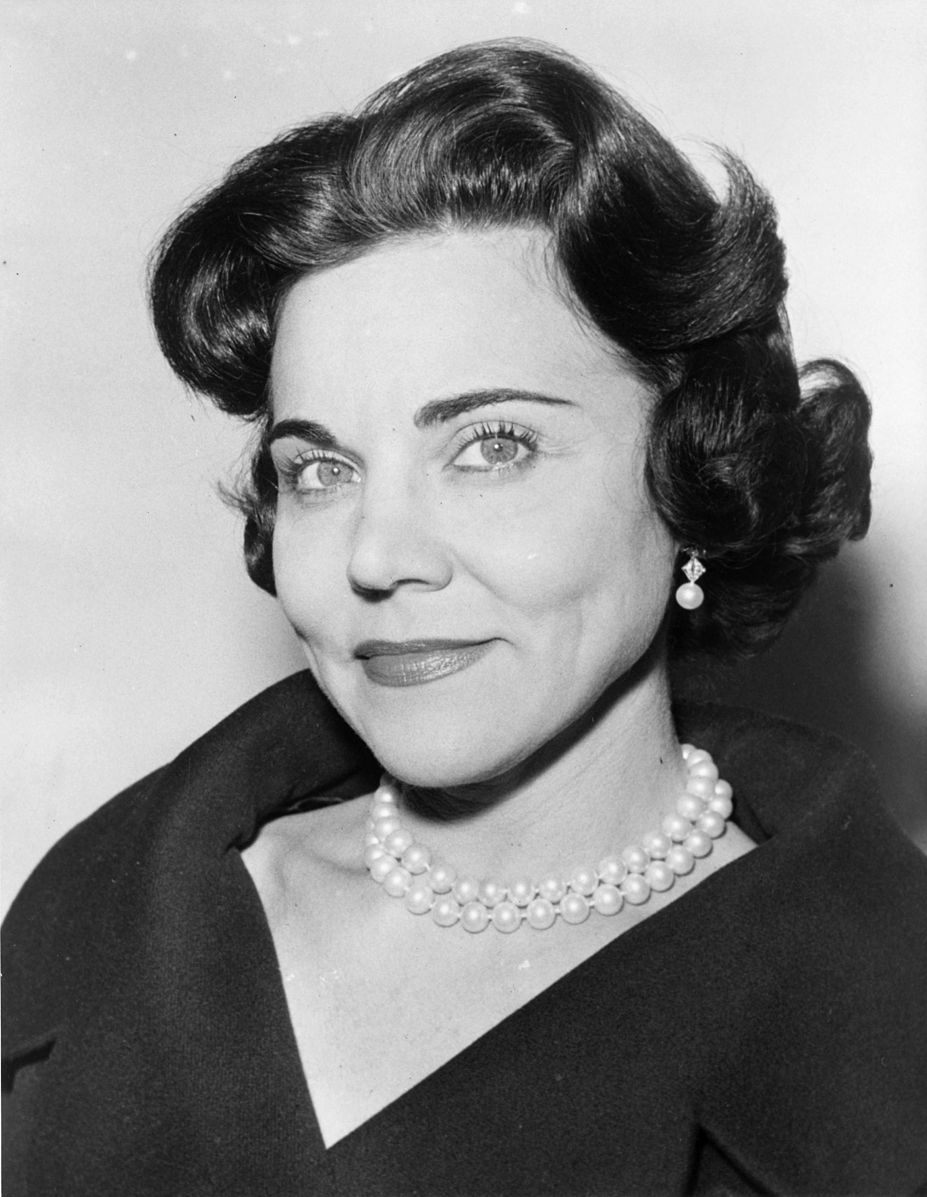
Esther “Ann Landers” Lederer, in 1961. (Photo: Fred Palumbo/Public Domain)
According to advice column lore, that’s when the trouble started. Eppie-now-Ann, seeking her own identity, was floored by what she saw as her sister’s professional copycatting. Popo-now-Abby couldn’t understand what all the fuss was about.
According to LIFE, it was this feud that drove them both. “The evidence indicates that it is their subtly ferocious struggle which lends their work its real fascination,” the author concludes, “and that without this goad neither of them would ever have begun it in the first place.”
For a long time, things were strained. Ann refused to speak to Abby for nearly a decade. Though they eventually reconciled, their competitive streak was powerful enough that it soaked into their surroundings. After they both had passed away, their children fought on their behalf. This was a true rivalry, unmitigated by space, time, success, or death.
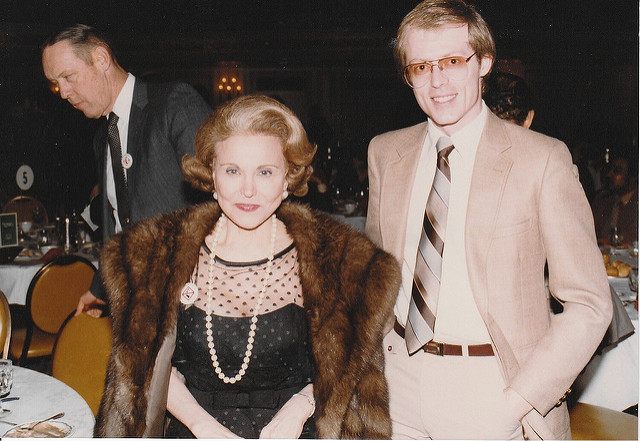
Esther “Ann Landers” Lederer in 2008, potentially in the same raccoon coat she and her sister used to wear around their college. (Photo: Alan Light/CC BY 2.0)
We wanted to find a way to measure these two giants, once and for all. The most obvious idea was to compare their work—whose advice would hold up better, if followed today?—but that kind of thing strongly resists empirical testing (and besides, none of us wanted to anger a mother-in-law for science). Both were socially progressive for their time, (relative) champions of birth control and ending the Vietnam War. Both were also often sharp and funny, dosing out all kinds of shade when they felt it warranted. As so often happens with rivals, they were surprisingly similar. Was there anything they disagreed on, besides each other? We were nearly stumped.
Then we found the cake recipes—Abby’s reprinted in the 1982 Sarasota Herald-Tribune, Ann’s in the 1986 Piedmont Dispatch. They were decidedly non-identical. Ann’s promised a fluffy pound cake, Abby’s a dense, frosted chocolate tower. It was 2016—the perfect time to compare two extremely impressive professional women on the strength of their cakes alone. We decided to have a bakeoff.
The Bakeoff
I baked both cakes on Thursday, August 11th, on an insanely hot day in a Park Slope apartment kitchen, and served them up that evening at the Great Media Trivia Competition of 2016, soliciting feedback from all tasters. The cakes were judged in four categories: ease of baking, overall appearance, texture, and taste. Each category had five points available, and the cake that racked up the most overall points would be declared the winner.
Category 1: Ease of Baking
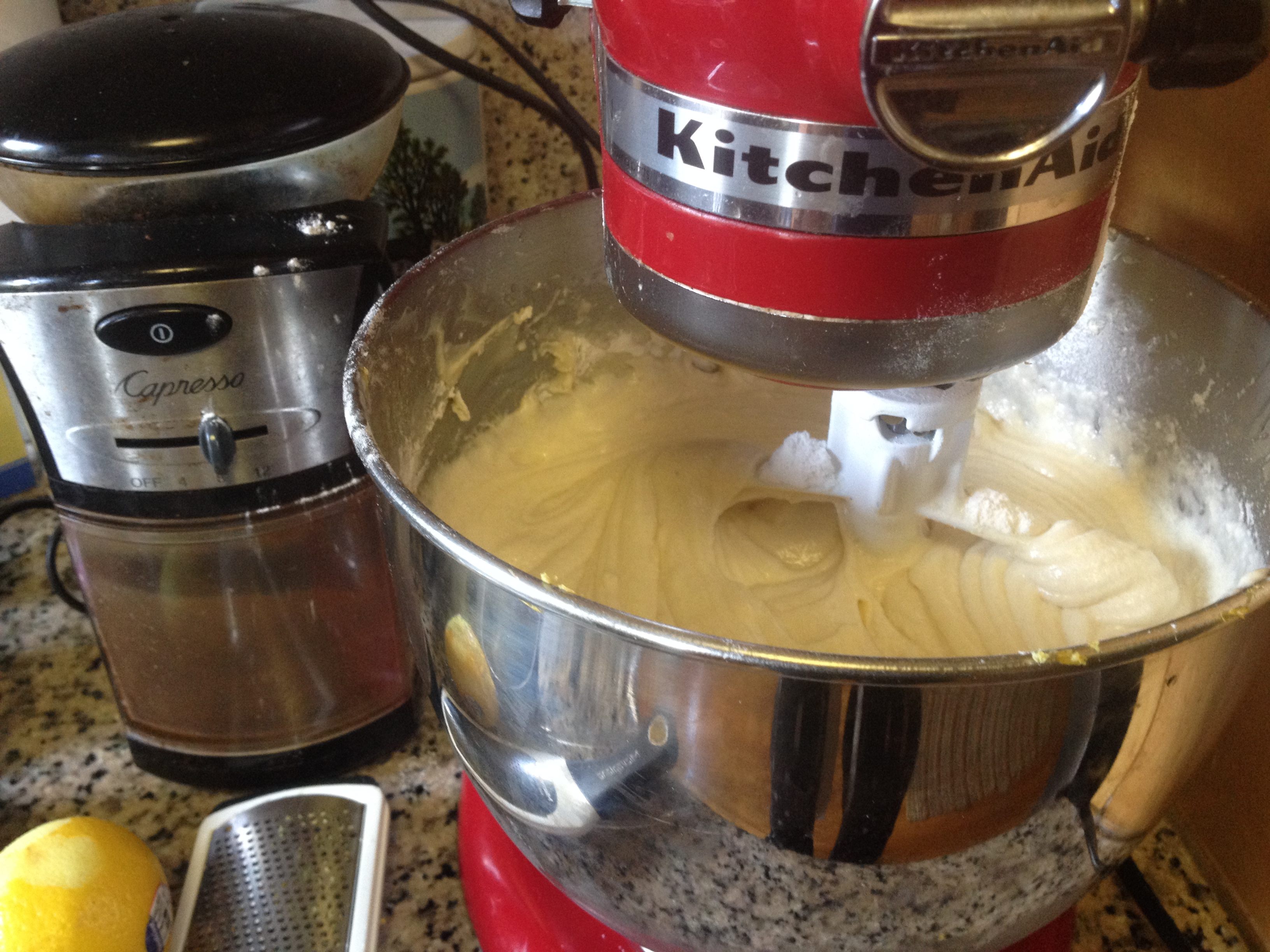
The Ann Landers batter, post-ginger ale. (Photo: Atlas Obscura)
I’m an internet journalist, and generally lack the patience for baking. I am also an insufferable East Coast millennial, and so have never made a cake that included three entire sticks of margarine and fully glutinous flour. My co-baker, Sarah Laskow, tends to cook medieval. This made us baking dummies compared to your average Ann/Abby column consumer—a good starting point for an ease of use test.
Both Ann and Abby’s cakes required mostly ingredients that tend to hang out in contemporary homes—flour, sugar, baking chocolate, etc. But each had a couple of wild cards. Ann’s was the ginger ale, and the sheer amount of margarine (again, three sticks!). Abby’s was the sour cream and the cream of tartar. Still, everything was easily acquired at a very normal grocery store.
First up was Ann’s cake, the instructions for which basically required dumping everything into a bowl one at a time and stirring. Sarah has a stand mixer, so this was an easy experience, bordering on delightful. The sugar, flour and margarine folded together like old friends. The ginger ale made the batter fizz up joyously. I scraped it into a pan, baked it for 45 minutes, and it came out golden and fragrant. It all felt like a first grade science experiment.
Next was Abby’s, a more complex endeavor involving several bowls, a precise addition sequence, two instances of double-boiling, and a full 1.75 hours of baking time. While this might have been exciting in other circumstances, on a hot NYC day, I wasn’t feeling it. “Dear Abby,” I thought, “My job today is making cakes, and yet I am grumpy about it. What can I do?” “Stir harder,” she answered, in my mind.
EASE OF BAKING SCORE:
Ann: 4.5/5
Abby: 3/5
Category 2: Appearance

The author, extremely thrilled at the Ann Cake’s emergence. (Photo: Ella Morton)
Abby cared greatly about her cake’s appearance. When Dora Gummerson, food writer for the New York Herald-Tribune, attempted to make it and sent her a picture, Abby replied with intense criticism. “The cake should have been baked in a smaller pan, so it would have been higher,” she wrote. Ann was slightly less concerned. “This recipe will appear in over 1,100 papers,” she wrote at the end of it. “A typesetter someplace is sure to goof up. If your cake flops I don’t want to hear about it.”
Ann’s words seemed to invite risk, so we acquired a special tube pan, shaped like an art deco cathedral. After carrying the cakes to our office still in their pans, for subway protection, we attempted to arrange them on plates. Here, the trouble began. Despite sincere efforts to grease the bundt pan (more margarine) the cake wouldn’t shed the pan. It took 20 minutes and a lot of banging to get it out. When it emerged, it was slightly tattered, like a crumbling sandcastle.
Compared to this, Abby’s two chocolate loaves slid out of their pans like otters, and stacked up easily. The frosting was so well-whipped it wasn’t drizzle-able, so we just slathered it all over everything. The result was impressively tall and enticing. You could bring that thing to a party and feel like you’d really done something.
APPEARANCE SCORE:
Ann: 3/5
Abby: 4/5
Category 3: Texture
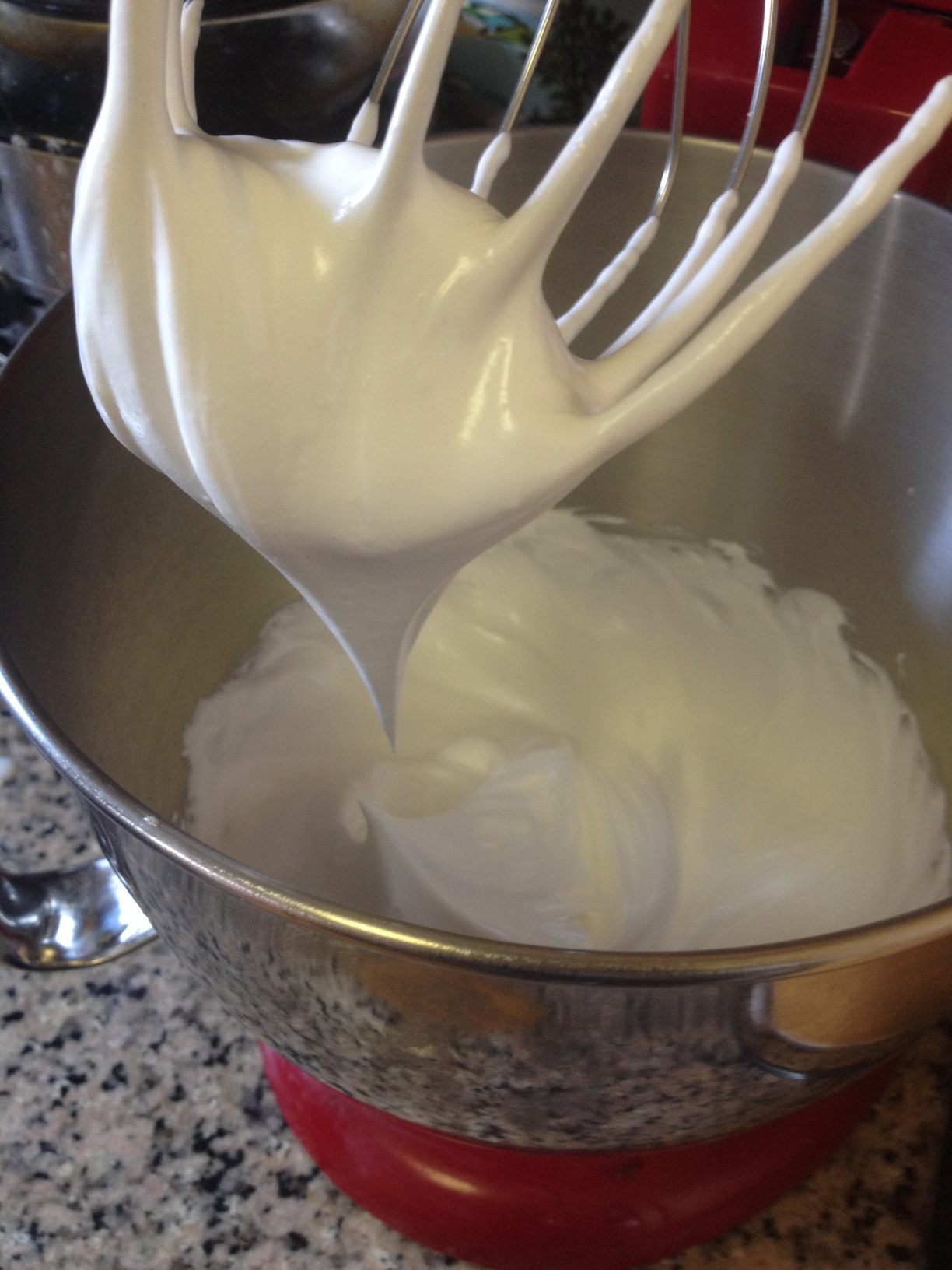
Peaky frosting, from the Dear Abby cake. (Photo: Atlas Obscura)
After attempting to psych out our trivia competitors by leaving the cakes untouched, in full view, for several hours, we finally carved into them with a butter knife, the only kind available. Ann’s sliced neatly and held together well, and was served easily on a scrap of paper towel. It was chewy, but still light, filled with ginger ale bubbles. When people talked through mouthfuls of it, I could still understand them.
Perhaps due to its layers, Abby’s cake carved into a gluey mess. The cake itself was dry and difficult to swallow, the mouthfeel described as “interesting” by some of the more generous tasters. The frosting, though, was springy, like a marshmallow, providing a good counterbalance. Mix Ann’s cake with Abby’s frosting, and you’d have, texturally at least, a great time.
TEXTURE SCORE:
Ann: 4/5
Abby: 2/5
Category 4: Taste

Atlas staffers having fun with cakes. (Photo: Atlas Obscura)
When invited to try the cakes, tasters tended to gravitate first towards Abby’s, which intrigued with its promise of both chocolate and vanilla. The frosting, as ever, came through: sweet, but not cloying. The cake itself was not as popular. “This is less flavorful in the flavor that it is supposed to be,” observed one person, frowning while chewing. Those who got the best possible bites, though—corner pieces with a good cake/frosting ratio—were very pleased.
Ann’s cake, the same bite to bite, took fewer risks. Though never transcendent, it was reliably good, like something you might eat mindlessly at a church breakfast. It did offer one surprise: “There’s a subtle note I can’t identify,” mused one taster. “That’s the ginger ale,” I responded, wisely.
TASTE SCORE:
Ann: 3/5
Abby: 3/5
The Winner
OVERALL SCORES:
Ann: 14/20
Abby: 12/20
So that’s that—when it comes to cakes, Ann, the original, beats Abby the upstart by a nose. Despite the density of both cakes, though, this contest left us feeling mostly empty. Perhaps the real lesson here is to let sleeping advice columnists lie.
Gastro Obscura covers the world’s most wondrous food and drink.
Sign up for our regular newsletter.








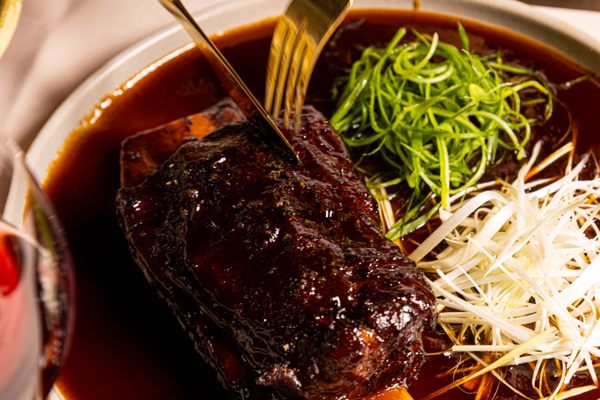









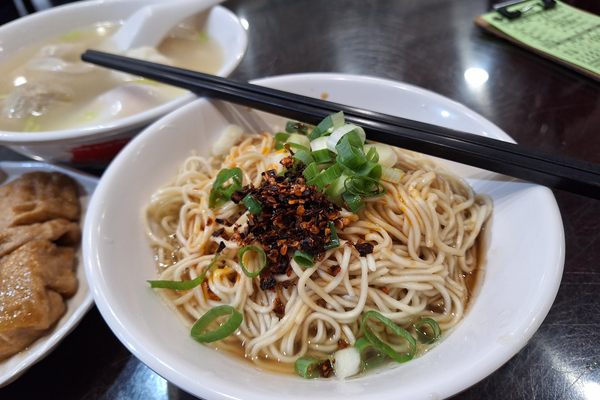





Follow us on Twitter to get the latest on the world's hidden wonders.
Like us on Facebook to get the latest on the world's hidden wonders.
Follow us on Twitter Like us on Facebook